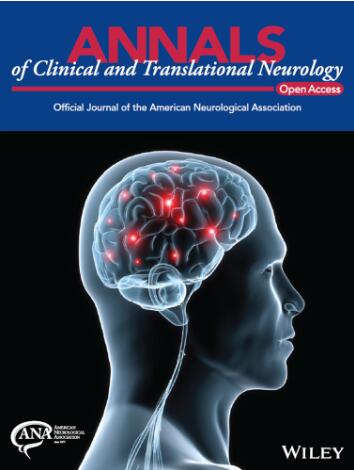Ofatumumab treatment in new-onset narcolepsy type 1 following SARS-CoV-2 infection
Abstract
Objectives
To explore the efficacy of ofatumumab in new onset narcolepsy type 1 following SARS-CoV-2 infection.
Methods
We present a 9-year-old girl who experienced new onset narcolepsy type 1 following SARS-CoV-2 infection. Polysomnography (PSG) followed by a daytime multiple sleep latency test (MSLT) was under taken after admission. A lumbar puncture was performed to evaluate the CSF orexin-A level. We assessed the CSF hypocretin-1 concentration utilizing the RIA kit from Phoenix Pharmaceuticals Inc. HLA typing was performed. Furthermore, we treated the patient with subcutaneous injections of ofatumumab, and followed her for nearly six-month. The CSF orexin-A level, CD19+ and total B cell population were measured before and after treatment.
Results
The girl had experienced SARS-CoV-2 infection 4 months before presentation. After that, she started to experience excessive daytime sleepiness and cataplexy. She also began to experience nightmares and violent behaviors during her nocturnal sleep, which were not present before her SARS-CoV-2 infection. At the same time, she developed obesity and exhibited psychiatric symptoms such as agitation, anxiety, and aggression. MSLT showed a mean sleep latency of 2.7 min, and 5 times sleep onset REM periods. The CSF orexin-A level was pathologically low at 34.06 pg/mL, and she tested positive for HLA-DQB1*06:02. Consequently, a diagnosis of narcolepsy type 1 was confirmed. Before and after treatment with subcutaneous injections of ofatumumab, the CD19+ and total B cell population before treatment and after 1 months showed a significant reduction from 11% and 296 cells per microliter to 0.56% and 11 cells per microliter, respectively. Within a week following ofatumumab therapy, there was a marked improvement in both excessive daytime sleepiness and cataplexy. Notably, her cataplexy was almost entirely resolved following ofatumumab therapy. Her condition remained stable throughout the 9-month follow-up period. She could normally attend school.
Interpretation
The efficacy of ofatumumab in this case provides additional support for an autoimmune etiology in narcolepsy with cataplexy, highlighting the potential involvement of B-cells in its pathophysiology. This understanding will aid in the development of specific immunotherapeutic strategies for early implementation upon disease onset.

 求助内容:
求助内容: 应助结果提醒方式:
应助结果提醒方式:


